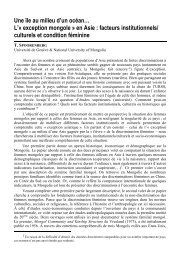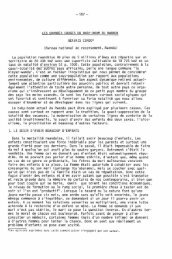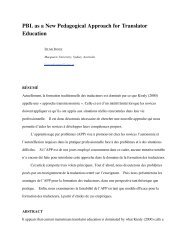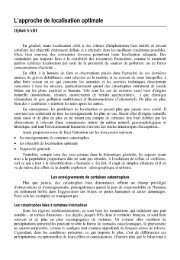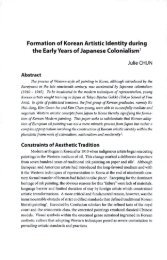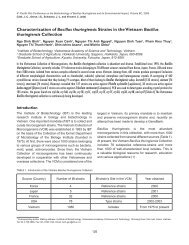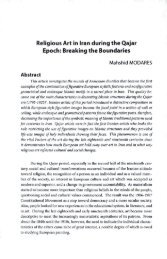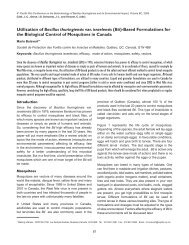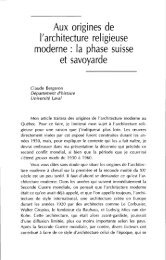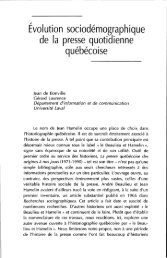A Proactive Approach to the Translation of Bible Stories for Children
A Proactive Approach to the Translation of Bible Stories for Children
A Proactive Approach to the Translation of Bible Stories for Children
Create successful ePaper yourself
Turn your PDF publications into a flip-book with our unique Google optimized e-Paper software.
Imagination, or more technically, <strong>the</strong> ability <strong>to</strong> project concepts on<strong>to</strong> o<strong>the</strong>r concepts, is a major,<br />
albeit general cognitive ability. It is <strong>the</strong>re<strong>for</strong>e no surprise that cognitive scientists are so interested in<br />
imaginative devices such as metaphor (Lak<strong>of</strong>f & Johnson 1999).<br />
4.2 Cognitive Linguistic Tools<br />
In our approach certain cognitive linguistic <strong>to</strong>ols proved particularly helpful in exploring<br />
imagination. Research in cognitive linguistics and more specifically, in cognitive grammar, focuses<br />
on two things in particular: space and time. Space is highly structured within this framework.<br />
Height, verticality, orientation, direction <strong>of</strong> movement, prepositions, deictic elements and<br />
demonstratives become some <strong>of</strong> <strong>the</strong> significant issues addressed within this <strong>the</strong>oretical framework.<br />
For our project, <strong>the</strong>se aspects need <strong>to</strong> be noted in <strong>the</strong> Hebrew source text, in translated texts and in<br />
pic<strong>to</strong>rial representations/translations.<br />
For <strong>the</strong> purposes <strong>of</strong> this study it should also be kept in mind that within cognitive linguistics<br />
all linguistic expressions are <strong>to</strong> a certain extent context-dependent. These cognitive entities, or<br />
domains, may be mental experiences, representational spaces, concepts, or conceptual complexes.<br />
Our sensory capacities provide a variety <strong>of</strong> basic domains: <strong>the</strong> visual system defines <strong>the</strong> potential<br />
<strong>for</strong> two- and three-dimensional visual sensations, co-ordinated with a multidimensional colour<br />
domain. The visual and spatial domains cannot be fully assimilated (even ignoring colour), despite<br />
<strong>the</strong>ir close association, since a blind person is also perfectly capable <strong>of</strong> grasping spatial relations<br />
(Langacker 1987: 147).<br />
To <strong>the</strong> extent that ordering and distance can be specified in a coherent, systematic way <strong>for</strong><br />
certain concepts in a domain, we can describe this domain in terms <strong>of</strong> one or more dimensions.<br />
Time, pitch and temperature exemplify one-dimensional basic domains, since a single, consistent<br />
ordering can be determined <strong>for</strong> <strong>the</strong> entities that occupy <strong>the</strong>m. We are capable <strong>of</strong> dealing with space<br />
in ei<strong>the</strong>r two or three-dimensional terms. Psychophysical research has shown that <strong>the</strong> colour<br />
domain is resolvable in<strong>to</strong> <strong>the</strong> three dimensions <strong>of</strong> brightness, hue and saturation. Dimensionality is<br />
equally important <strong>for</strong> abstract domains. Several dimensions figure, <strong>for</strong> instance, in <strong>the</strong> conception <strong>of</strong><br />
a network <strong>of</strong> kinship relations: one is <strong>the</strong> “vertical” dimension <strong>of</strong> ascending/descending<br />
generations; ano<strong>the</strong>r is <strong>the</strong> “horizontal” dimension <strong>of</strong> lateral relationships; in addition, each node in<br />
a kinship network is potentially specified <strong>for</strong> gender and o<strong>the</strong>r properties (Langacker 1987:149).<br />
This will all feature in <strong>the</strong> discussion <strong>of</strong> <strong>the</strong> space imagery employed in Genesis 28.<br />
4.3 Imagery<br />
“Beloved by children and painters, extravagantly allegorised throughout <strong>the</strong> his<strong>to</strong>ry <strong>of</strong> biblical<br />
interpretation … and an inspiration <strong>to</strong> hymn writers, <strong>the</strong> evocative image <strong>of</strong> Jacob’s ladder is<br />
mentioned only once in <strong>the</strong> <strong>Bible</strong>,” (Ryken, Wilhoit & Longman 1998: 433).<br />
The image <strong>of</strong> Jacob’s ladder, or stairwell (Hebrew: sull!m) 9 , has been interpreted<br />
innumerably in visionary and mystical ways (Ryken, Wilhoit & Longman 1998: 433). In <strong>the</strong> dream,<br />
earthly reality opened up in<strong>to</strong> a vision <strong>of</strong> God and heaven. Jacob’s stairwell <strong>the</strong>re<strong>for</strong>e becomes an<br />
image <strong>of</strong> <strong>the</strong> holy or numinous, as <strong>the</strong> narrative hints when it tells us that Jacob, “[…] was afraid<br />
(Hebrew: wayîr!’), and said, ‘How awesome is this place! This is none o<strong>the</strong>r than <strong>the</strong> house <strong>of</strong><br />
God, and this is <strong>the</strong> gate <strong>of</strong> heaven’ ” (Gen 28:17 RSV).<br />
The imagery <strong>of</strong> ascent names <strong>the</strong> movement from a lower <strong>to</strong> a higher place, and it accordingly<br />
partakes <strong>of</strong> <strong>the</strong> generally positive associations <strong>of</strong> being high. Some <strong>of</strong> <strong>the</strong> imagery <strong>of</strong> ascent takes<br />
its place within <strong>the</strong> two-tiered picture <strong>of</strong> <strong>the</strong> universe that <strong>the</strong> bible assumes (Ryken, Wilhoit &<br />
Longman 1998: 49). Heaven is above <strong>the</strong> earth, and creatures or people (<strong>for</strong> example, Enoch, Elijah)<br />
who move from earth <strong>to</strong> heaven do so by ascending. Thus angels descend from and ascend <strong>to</strong><br />
heaven in Genesis 28:12. This agrees with <strong>the</strong> general ancient Near Eastern context <strong>of</strong> <strong>the</strong> source<br />
text, where <strong>the</strong> cultic places <strong>for</strong> sacrificial purposes as a rule were also referred <strong>to</strong> as “high places”<br />
(Hebrew: b!môt). Pilgrimages <strong>to</strong> Jerusalem, that most sacred <strong>of</strong> cities in <strong>the</strong> source text, follow <strong>the</strong><br />
same directional orientation <strong>of</strong> “going up” (Hebrew: ‘!lâ) and <strong>for</strong> <strong>the</strong> geographically flat terrain <strong>of</strong><br />
<strong>the</strong> Mesopotamian hinterland, <strong>the</strong> Babylonians and Assyrians compensated with <strong>the</strong> erection <strong>of</strong>



